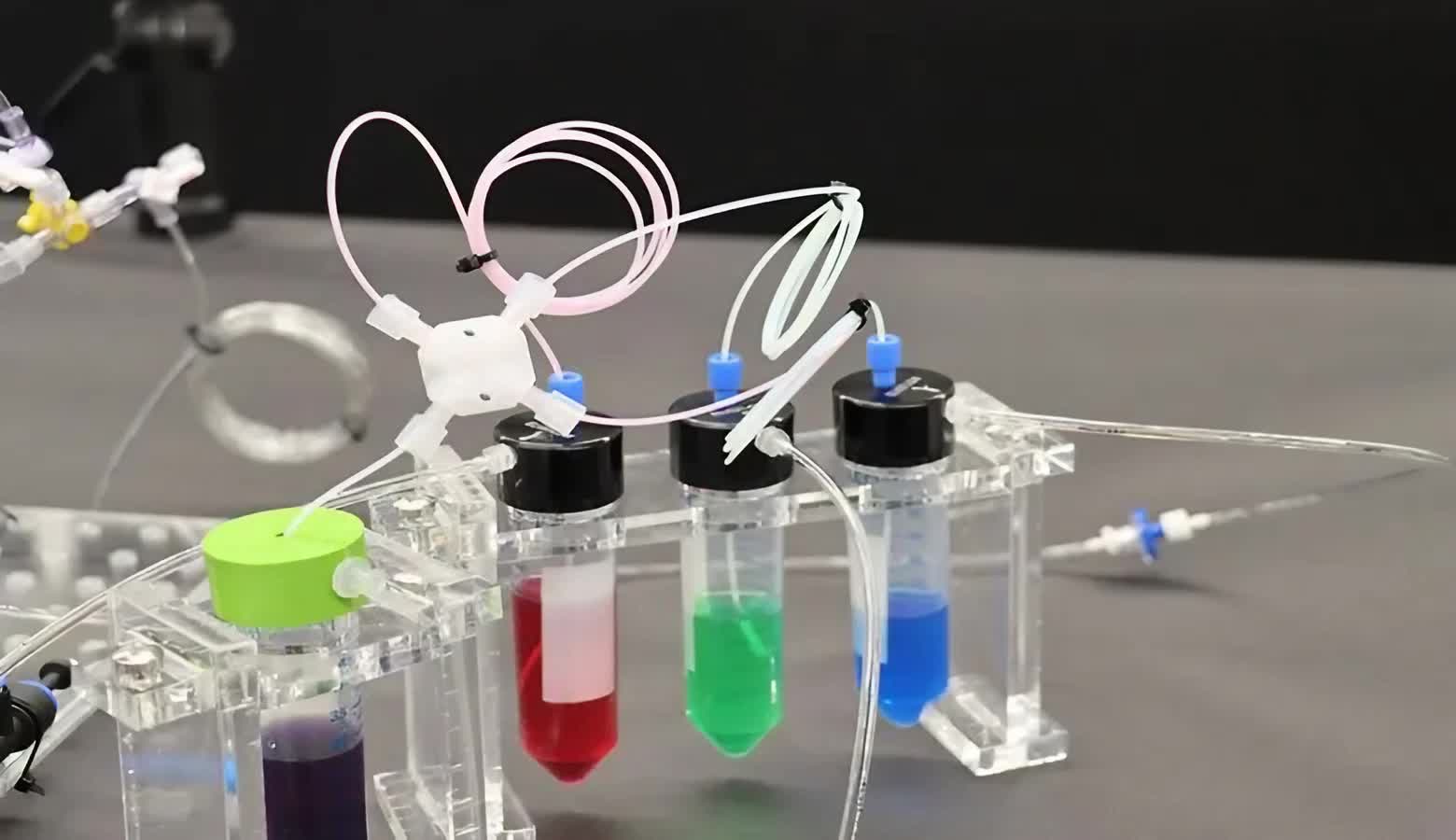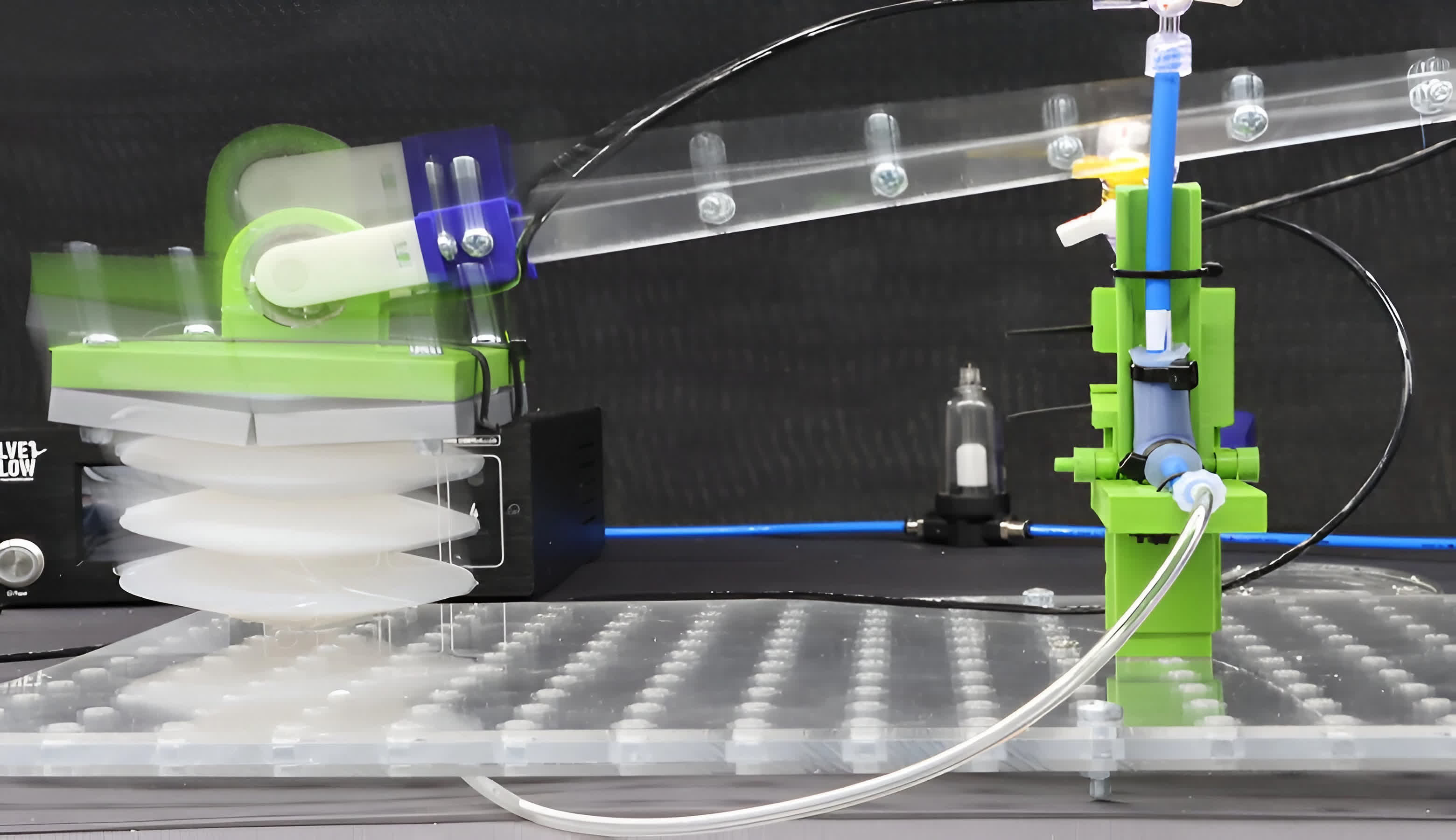What just happened? Researchers from King's College London have figured out how to give robots complex instructions without using any electricity at all, not even through batteries. The key is a new type of compact circuit that uses fluid pressure instead of electrical currents to transmit commands to robotic devices.
The circuit works by mimicking how certain parts of the human body operate. The engineers were able to use it to encode a series of instructions through variations in the pressure of liquid flowing through these special circuits. The circuits themselves act like the transistors in normal electronics, except they use hydraulic pressure instead of electricity as the input signal.
When outfitted with these quirky circuits, robots can still perform several complex maneuvers, as seen in the demo video below.
According to the researchers, this amazing "world-first" achievement could free up tons of space normally reserved for a robot's electronic "brain," potentially allowing future bots to pack in more advanced AI software to help them better understand social cues, be more dexterous, and operate with greater autonomy.
Perhaps more impressively, the research could enable robot designs with more computational load offloaded directly to the hardware. Dr Antonio Forte, the King's College senior lecturer who led the study, likens this to how the brain doesn't technically need to tell your heart to beat. Similarly, a robot's main control unit doesn't need to waste processing power on basic, routine tasks.

Since the pressure-based circuits don't rely on electricity at all, the tech also enables robots to operate in situations where electronics would get fried – such as around powerful radiation or in medical facilities with large MRI machines.
The researchers also note that the tech could be beneficial for squishy "soft robots" made out of flexible materials like robotic muscles. The current approach of introducing rigid electronic components to translate the brain's signals puts a strain on the software when you want those soft materials to perform complex movements, they say.
The team's paper detailing their groundbreaking fluidic circuit was awarded a featured cover spot in the journal Advanced Science for its "outstanding results." Next, they hope to scale it up and integrate it into larger robots like crawlers that monitor power plants.
Image credit: King's College London
